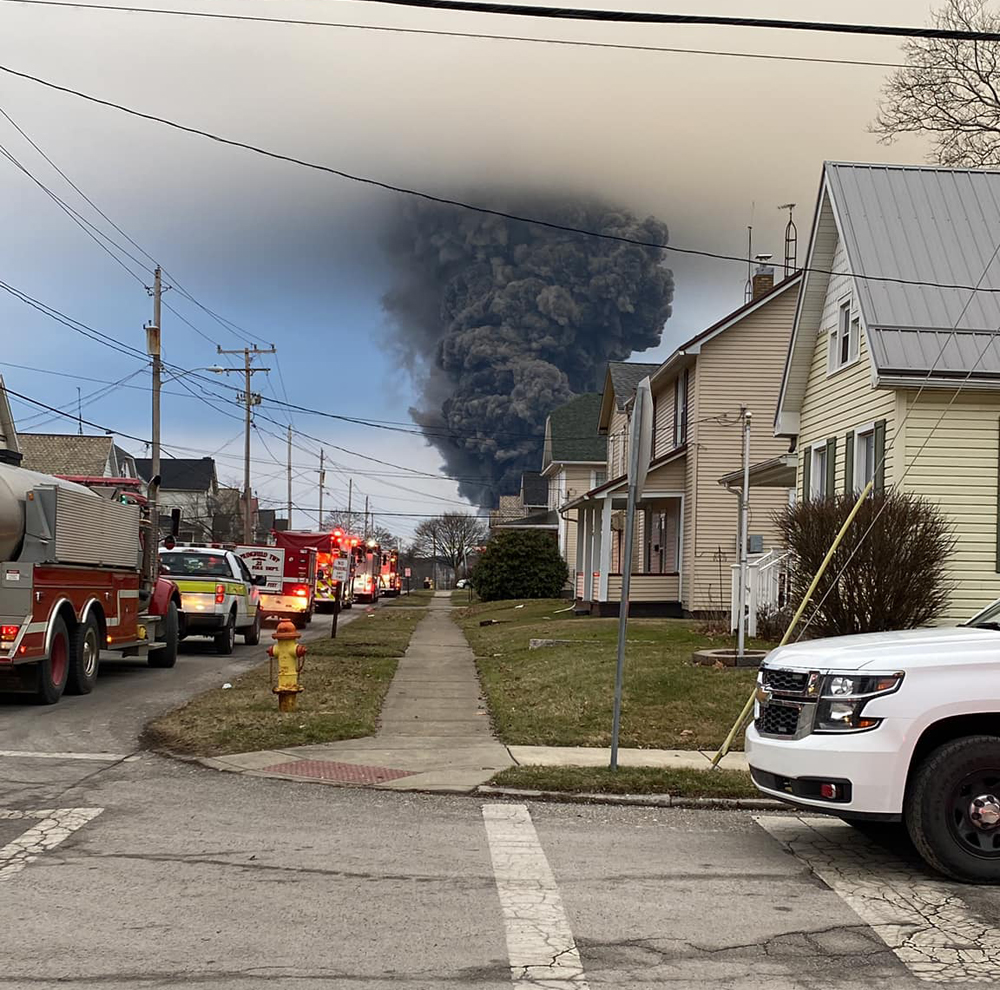
Norfolk Southern will take several steps to improve its wayside defect detector network in the wake of the National Transportation Safety Board preliminary report on last month’s disastrous derailment in East Palestine, Ohio.
NTSB officials say the Feb. 3 wreck of train 32N was likely caused by the catastrophic failure of a wheel bearing on the 23rd car. Wayside hot bearing detectors were functioning as designed, the NTSB said, but a warning about the overheated bearing came just moments before the derailment.
“Reading the NTSB report makes it clear that meaningful safety improvements require a comprehensive industry effort that brings together railcar and tank car manufacturers, railcar owners and lessors, and the railroad companies,” NS CEO Alan Shaw said in a statement today (Monday, March 6). “We are eager to help drive that effort and we are not waiting to take action.”
NS will add about 200 hot box detectors to its network at locations where the spacing between existing detectors is more than 15 miles. Currently, the average spacing on core NS main lines is 13.9 miles.
The first new detector will be installed on the western approach to East Palestine, where there’s a 19.2-mile gap between detectors on the Fort Wayne Line.
NS also will work with wayside detector manufacturers to pilot next-generation hot bearing detectors. The railroad wants to accelerate the testing and deployment of detectors that can scan a larger cross-section of a car’s bearings and wheels. NS says these so-called “multi-scan” detectors may offer the potential to more effectively spot overheating bearings.
NS will work with other railroads to re-evaluate the temperature threshold at which an alarm is triggered, on how to best analyze data for patterns that could provide earlier warnings, and how to best respond to high-temperature alarms. The two detectors that train 32N passed prior to derailing in East Palestine revealed increasing bearing temperatures on the 23rd car in the train, but the readings were not high enough to trip an alarm.
NS also says it will deploy 13 additional acoustic bearing detectors, which analyze the sound signature of vibration inside the axle and can identify potential problems that a visual inspection could not. The railroad currently has five acoustic bearing detectors in service. The additional detectors will be installed on high-volume main lines.
The railroad also will accelerate its digital train inspection program. Inspection portals equipped with ultra-high resolution cameras provide a 360-degree view of trains as they pass the detector. The images are then analyzed using machine learning and artificial intelligence to identify defects. The next phase of the technology, which is being developed in partnership with Georgia Tech Research Institute, will be installed on the Premier Corridor that links Chicago and New Jersey via East Palestine. NS has tested the system in Inman Yard in Atlanta and will install the first portal in a few weeks, a railroad spokesman says.
NS’s new safety measures follow the Feb. 23 release of the NTSB’s preliminary report, which traced the derailment and the initial fire to an overheated axle on car number 23, which was carrying plastic pellets. Subsequent NTSB testing indicated that the aluminum covers over the pressure relief valves on three of the five derailed tank cars carrying vinyl chloride melted.
Last week the Federal Railroad Administration issued a safety advisory that encouraged railroads to improve the way they collect and use data from wayside hot bearing detectors in order to prevent catastrophic derailments.
The Rail Safety Act of 2023, filed in the Senate last week, would, among other things, require hotbox detectors to be spaced just 10 miles apart.













From the 2008 NS timetable for the Fort Wayne line there was another DED located at Columbiana, MP 60.8, about halfway between the current one at E. Palestine and the current one at Salem. It would be interesting to know when it was removed from service, and why.
What good is it going to do if the crew is not allowed to stop when the detector tells them about a problem. They have to keep going until the dispatcher tells them to stop, or they derail.
Don’t tell me what you can’t do, tell me what you can do! This is not hard.
Bean counters whining!
Just where is NS and all the other haulers of Haz Mat going to get the necessary equipment? I imagine that the RRs have several bungalows as spares wired for CPs, signals, grade crossings, defect detectors, etc. Now are they universally wired or does each one require specialized wiring? As I recall ab unplanned MNRR replacement bungalow required over 6 months to be wired. the bungalows do not come cheap at over $25,000 per standard unit. So, who builds them and is there a back log right now?
Since there appears to be ore than one builder of detector equipment suspect again that there will be differences in wiring.
But where are the RRs going to get all the necessary signal maintainers to install,, final wiring, testing,& certification ? The signalmen all have other resent duties and required inspections to do as well. Then getting local electrical. Or, solar panels service especially out west. Radios? Satellite service ? All in all another chance for screw ups but finish some what quicker than PTC.
Lets see 6 + Class 1s needing 200 + each. 1200+ detector units. Will the electronics, infra detectors, etc, have enough certified builders to turn out the necessary equipment. ?
My only comment here will be: YA THINK?????
With what this accident is going to cost NS they could have done a lot of safety improvements.
Obviously an industry attempt to avoid FRA regulations. Lobbyists and lawyers are working overtime on this one.
If airlines had FRA style safety regulations and Mayo Pete’s voluntary approach, nobody would ever fly. Why shouldn’t line-side communities expect better? The industry fought PTC tooth and nail for decades and killed ECP brakes on hazardous unit trains.
The fact that US/Canada railroads have abysmal safety records compared to other industrialized countries says it all. As does the profit margins and executive compensation.
You made great a statement on safety and other systems used in US railroading. Now back up your words with some facts.
Please use ton miles per incident and just who is paying for the safety measures.
Call me Captain Obvious … or else I am brilliant.